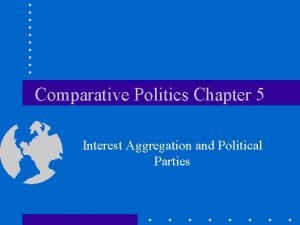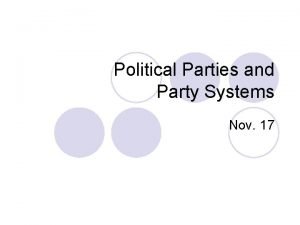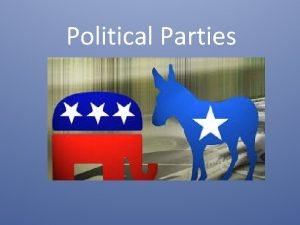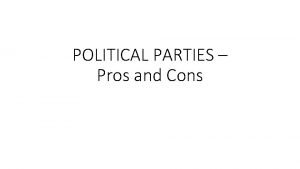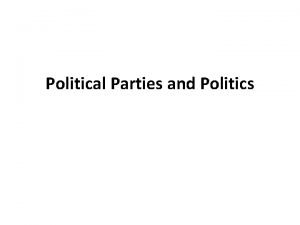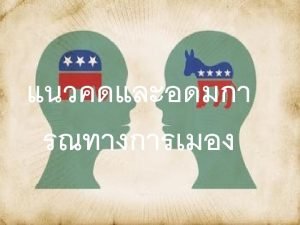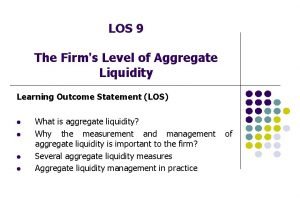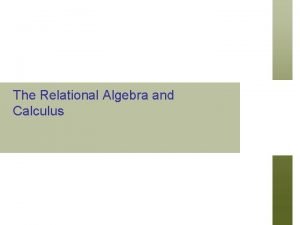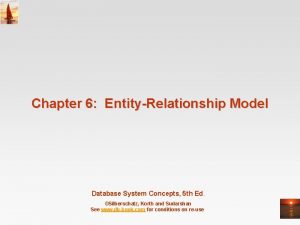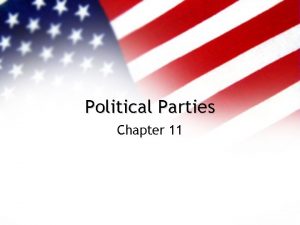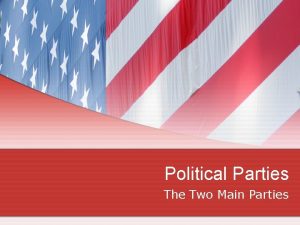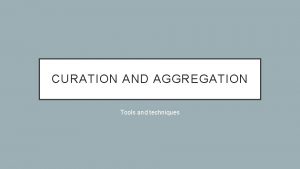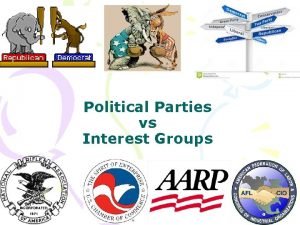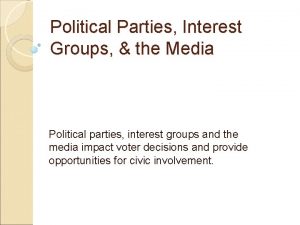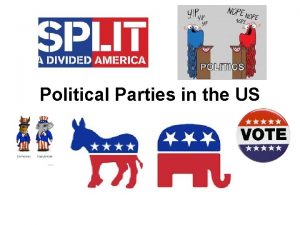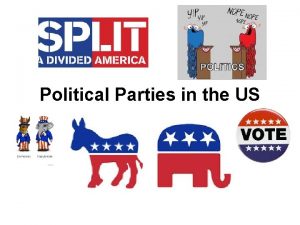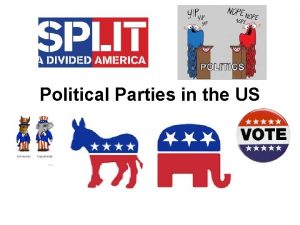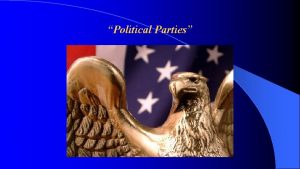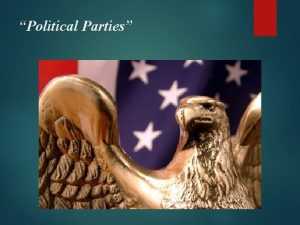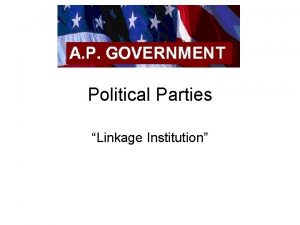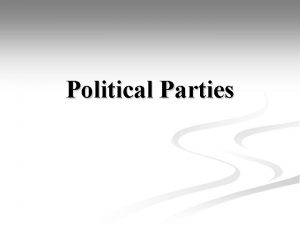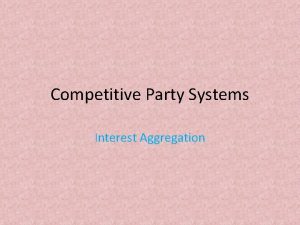Political Parties Interest Aggregation Interest Representation Political Parties

















- Slides: 17

Political Parties Interest Aggregation Interest Representation

Political Parties vs. Interest Groups n both represent political interests u n n political parties also aggregate interests interest groups strive to influence political outcomes political parties strive to become the governing party

Type of Political Parties n basis of organization u n electoral-professional parties vs. mass parties basis of electoral competition pragmatic parties (brokerage parties) u ideological-programmatic parties u interest parties u

Ideological/Program matic Parties n organized around social cleavages class u religion u ethnicity u region u

The Ideological Spectrum The Left -Socialist More Gov’t The Right -Conservative Less Gov’t • government regulation of the economy • greater reliance on the market • policies to help disadvantaged groups • fewer government regulations • policies to redistribute income • no special treatment for special interest groups • lower taxes

General Trends, Political Parties n the rise of pragmatism u parties increasingly competing to occupy the centre of the political spectrum

The Ideological Spectrum The Rise of Pragmatism The Left -Socialist Tony Blair (Britain) New Labour Bill Clinton (US) New Democrats The Right -Conservative George W. Bush (US) Compassionate Conservatism

General Trends, Political Parties n n single member plurality systems encourage pragmatic parties; PR promotes ideological/interest parties the rise of pragmatism parties increasingly competing to occupy the centre of the political spectrum u reasons? u « the fall of communism

Political Parties & Democracy n mass parties vs. electoralprofessional parties u mass parties encourage greater participation in politics by the public « majoritarian u democrats electoral-professional parties « elite democrats

Political Parties & Democracy n ideological/interest parties vs. pragmatic parties u ideological/interest parties « gives clear electoral choices • help make elections meaningful • encourages greater mass participation • majoritarian democrats u pragmatic parties depend on party elites « elections « • differences between parties are limited • electoral choice is really about best management team • elite democrats

Interest Groups Interest Representation

Interest Groups n are organizations whose members act together to influence gov’t policy on specific issues, without contesting elections (different from parties!) u n lobbying play an important role in representing citizen demands to gov’t

Determinants of Interest Group Influence: size (membership) and cohesion n information, expertise n leadership, level of organization n resources n high-status (celebrity) membership n values, goals, tactics, issue - compatible with broader political culture? e. g. , Sierra Club vs Greenpeace vs Earth First! n

Determinants – cont’d n n links to decision-makers gov’t receptivity, is function of: u u u • budgets philosophy compatible? public opinion supportive? media attention? credibility? institutionalization: degree to which a group has become an acknowledged actor in/part of the political process • • institutional/associational/anomic interest groups co-optation?

Interest Groups and Democracy n liberal democracy u pluralism « as long as individuals are free to form interest groups, interest group competition represents interests in society « groups do not have to be equal; have to have equal opportunity to compete

Interest Groups and Democracy n majoritarian democratic critique of pluralism u interest group politics is grossly uneven « u well-financed, privileged interests hold the advantage the paradox of interest group influence « the strongest interest groups (e. g. economic interests) do not have to lobby in order to have influence

Interest Groups and Democracy n elite democracy u interest group competition and lobbying (even if grossly uneven) is fine so long. . . « as political elites retain the power to make overall decisions in the general welfare • the summation of all interest group demands does not equal the general welfare
 What is interest aggregation
What is interest aggregation Interest aggregation
Interest aggregation Political parties
Political parties Political parties
Political parties The supreme court change
The supreme court change Political parties pros and cons
Political parties pros and cons Brainpop political parties
Brainpop political parties Political parties
Political parties What was one way progressives differed from populists
What was one way progressives differed from populists Soup and ideology
Soup and ideology Remote sensing ap human geo
Remote sensing ap human geo Wan aggregation
Wan aggregation Biratix
Biratix Aggregation in relational algebra
Aggregation in relational algebra Hbase aggregation
Hbase aggregation Fish aggregation devices
Fish aggregation devices Foo9822
Foo9822 Aggregation database
Aggregation database
